Physical Address
304 North Cardinal St.
Dorchester Center, MA 02124
Physical Address
304 North Cardinal St.
Dorchester Center, MA 02124
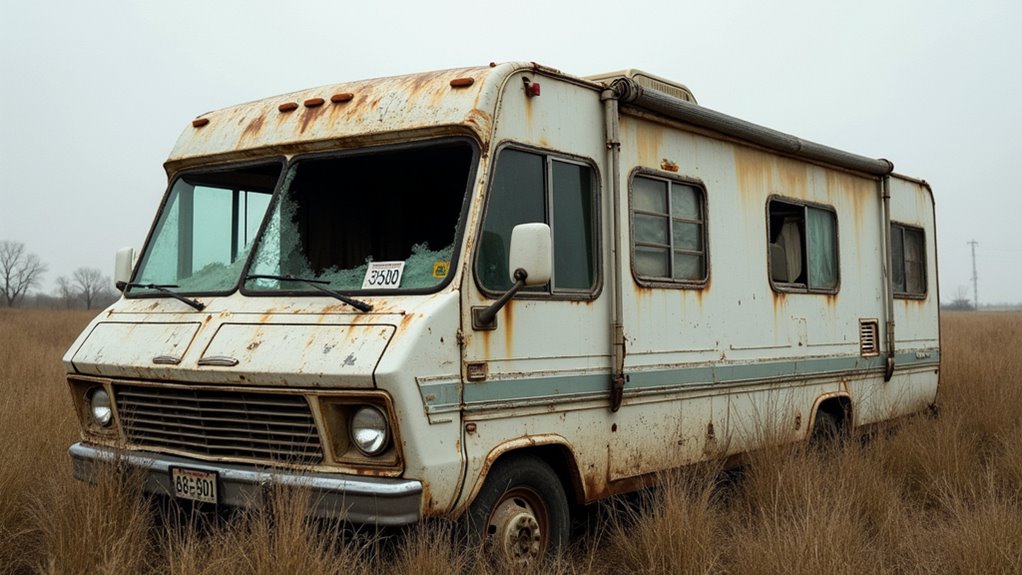
Sticker shock is just the beginning - discover why seasoned travelers warn against jumping into the seemingly glamorous world of RV ownership.
You’ve probably seen those glossy RV advertisements showing happy families living the dream of endless road trips and perfect campfire moments. Before you rush to sign on the dotted line, you’ll want to reflect on some hard truths about RV ownership that dealers won’t readily share. From crushing financial commitments to unexpected lifestyle challenges, there’s more to owning a recreational vehicle than meets the eye. Let’s explore why your RV fantasies might be better left as just that – fantasies.
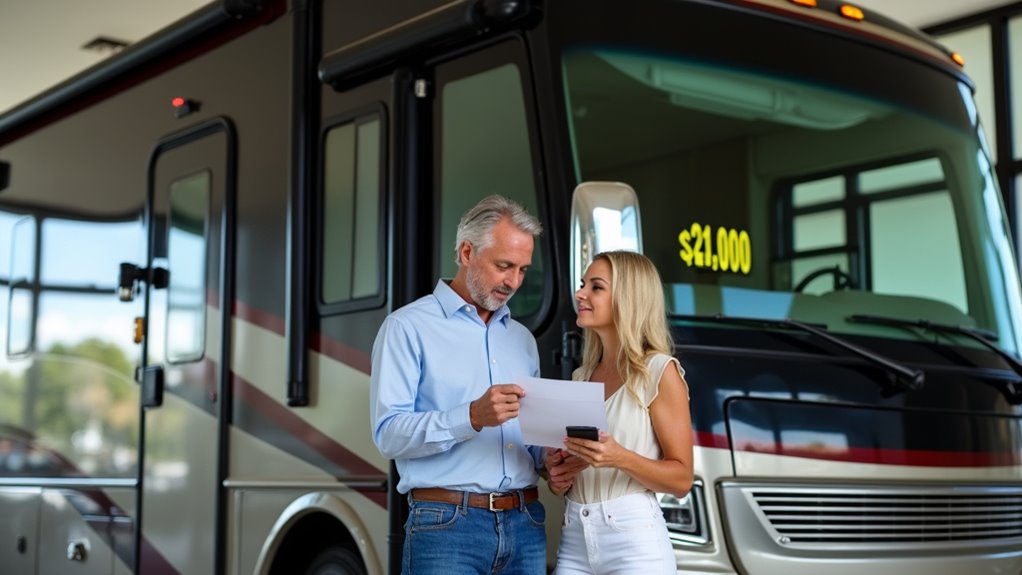
Nearly every prospective RV buyer faces sticker shock when exploring today’s market prices.
Today’s RV market leaves potential buyers reeling from astronomical prices that few are truly prepared to encounter.
You’ll find motorhomes averaging $62,412, while premium models like Airstreams command up to $123,000. Even with dealer discounts, you’re still looking at $98,000 for luxury units. Due to high interest rates, many dealers are struggling to maintain robust inventory levels.
The financial burden doesn’t stop at purchase.
You’ll likely need a 10-20 year loan with high interest rates to make payments manageable. This extended financing means you’ll pay considerably more than the sticker price over time. Considering travel trailer rentals can provide a more cost-effective alternative for occasional travelers.
If you’re considering a new 2025 model, you’ll face even steeper costs, as prices continue to outpace both general inflation and new car prices.
Plus, your investment starts losing value immediately, just like a new car driving off the lot.
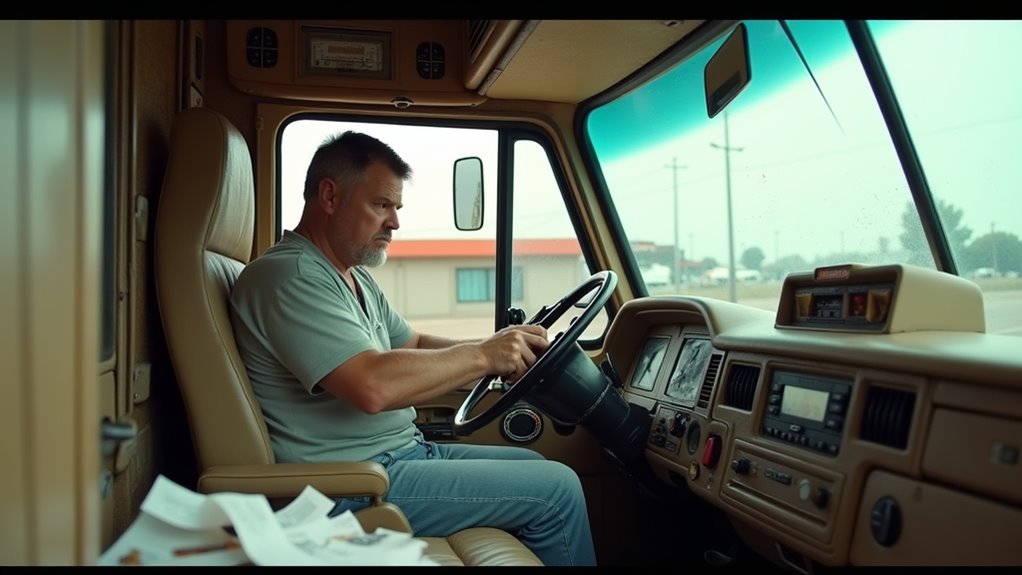
The upfront cost of an RV is just the beginning of your financial commitment – its voracious appetite for fuel will drain your wallet consistently.
You’ll face sobering fuel efficiency numbers: Class A motorhomes get just 6-10 mpg, while even the more efficient Class B’s only manage 18-22 mpg.
With massive 80-90 gallon fuel tanks, you’ll spend hundreds of dollars each time you fill up.
Despite implementing proper tire inflation and maintenance, you’ll still struggle with poor fuel economy.
You’ll need frequent refueling stops, disrupting your travel plans and testing your budget.
The environmental impact is equally concerning – your RV’s heavy fuel consumption translates to a substantial carbon footprint.
Don’t forget the cascade of related expenses: increased engine wear, frequent servicing, and costly repairs to fuel system components.
Even if you opt for a diesel engine’s better efficiency, the higher fuel prices often cancel out potential savings.

While many RV buyers focus on the sticker price, hidden maintenance costs can quickly turn your dream vehicle into a financial nightmare. Even simple plumbing issues like shower drain clogs can require costly professional intervention.
Don’t let the shiny price tag fool you – owning an RV comes with a mountain of hidden costs that can devastate your finances.
You’ll face relentless depreciation, losing up to 15% of your RV’s value in the first year alone. Beyond that, you’re looking at around $1,000 annually just for basic maintenance, with unexpected repairs potentially costing thousands more. Real-world experience shows maintenance costs average $3,407 over a five-year period.
Don’t forget about annual inspections, registration fees, and compliance costs that’ll keep draining your wallet year after year.
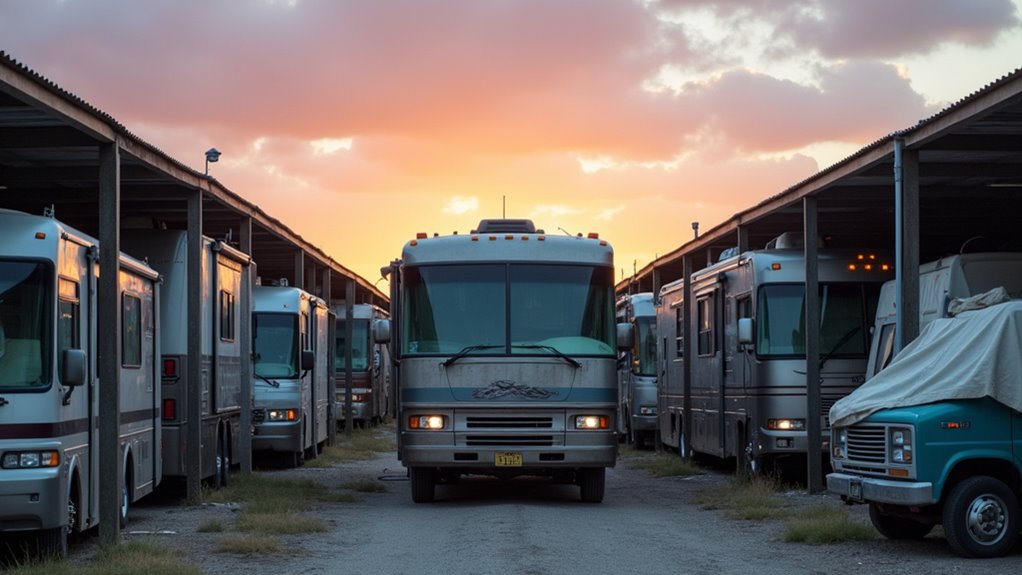
Beyond regular maintenance headaches, storing your RV presents another significant financial burden.
You’ll face monthly fees ranging from $50 to $270+, depending on your location and storage type. Urban areas and popular recreational destinations will hit your wallet the hardest.
You can’t simply park your RV in your driveway, as many neighborhoods restrict RV parking. This forces you to seek off-site storage facilities, where you’ll need to choose between outdoor, covered, or indoor options.
While outdoor storage costs less, you’ll pay premium rates for indoor climate-controlled units with security features. The size of your RV also matters – you might end up paying for unused space in standard-sized units. Many facilities require proof of RV insurance coverage before allowing storage.
Plus, recent construction costs and supply chain issues have limited new facility development, keeping prices high in many areas.
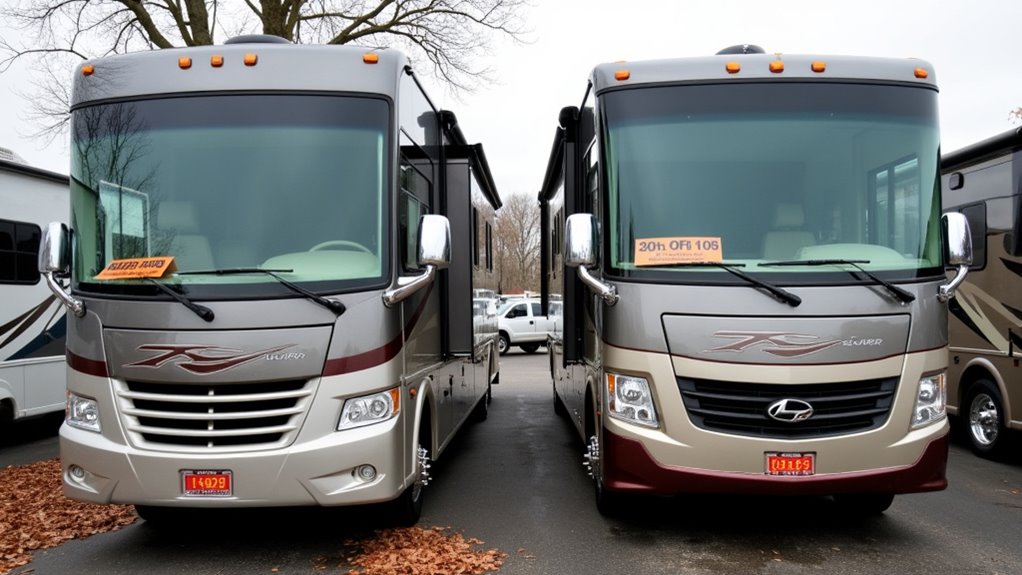
Much like watching money burn, purchasing a new RV means losing up to 20% of its value the moment you drive it off the lot. Your investment will continue to plummet, with depreciation reaching up to 49% by year five and potentially 62% by year ten.
You’ll face steeper depreciation than car owners due to your RV’s specialized nature and complex features. Class C motorhomes tend to hold their value better than other types.
While you can’t stop depreciation entirely, buying used or maintaining your RV meticulously can help minimize these substantial losses.
Consider renting out your RV to offset some of the inevitable value decline.
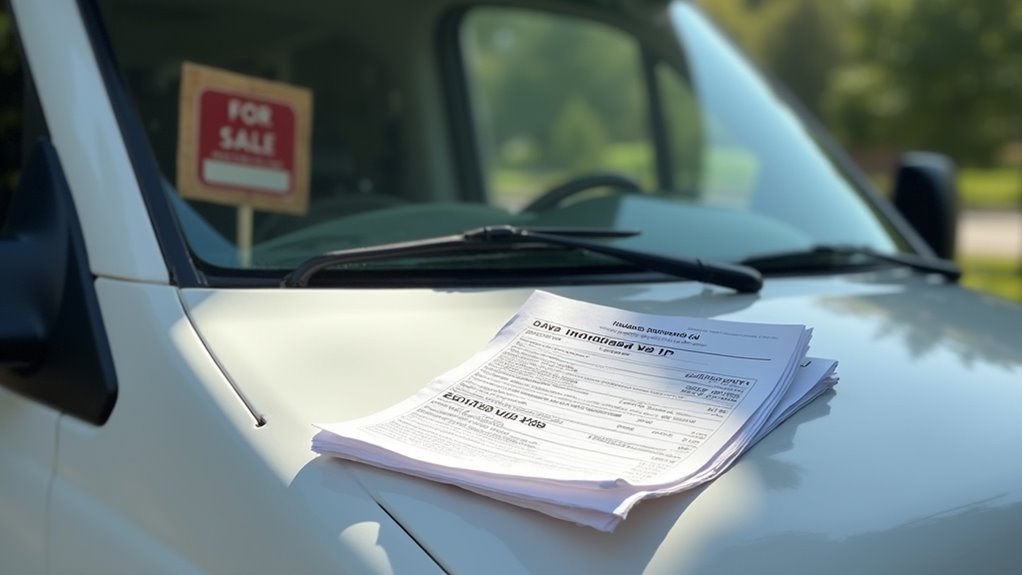
After experiencing sticker shock from your RV’s purchase price, you’ll face another financial surprise when shopping for insurance. Annual premiums can soar to $4,000 for full-time RV living, with rates climbing steadily year after year.
Even part-time usage won’t spare you from significant costs, as basic coverage starts at $200 and can exceed $3,000 for luxury motorhomes. Companies like Good Sam and Progressive dominate the market, limiting your options for competitive rates.
You’ll quickly discover that RV insurance is far more complex than standard auto coverage. Your location, driving history, and vehicle type dramatically impact rates, while finding meaningful discounts proves frustratingly difficult.
Worse yet, many policies contain unexpected exclusions and coverage gaps that could leave you financially vulnerable. Weather damage, personal property protection, and storage requirements often come with strict limitations or aren’t covered at all.
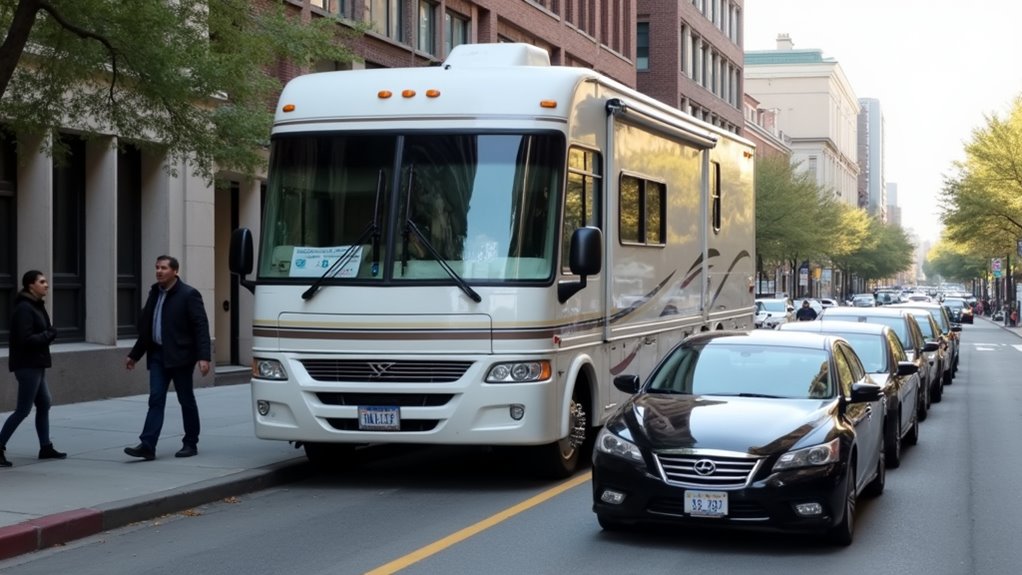
Dreaming of parking your RV in the heart of a major city? Think again. Cities across America are increasingly restricting or outright banning RV parking, making urban adventures nearly impossible.
Urban RV life is becoming a distant dream as major cities crack down on parking, forcing nomads to rethink their travel plans.
You’ll face strict regulations, limited options, and potential fines if you break local ordinances. Some cities are spending upwards of $1 million just to install no-parking signs targeting RVs.
While some cities offer “safe parking” programs, they’re often overcrowded and come with strict rules you’ll need to follow.
The reality of urban RV living includes:
Don’t count on church parking lots or designated safe zones – they’re typically full and may not accept new residents.
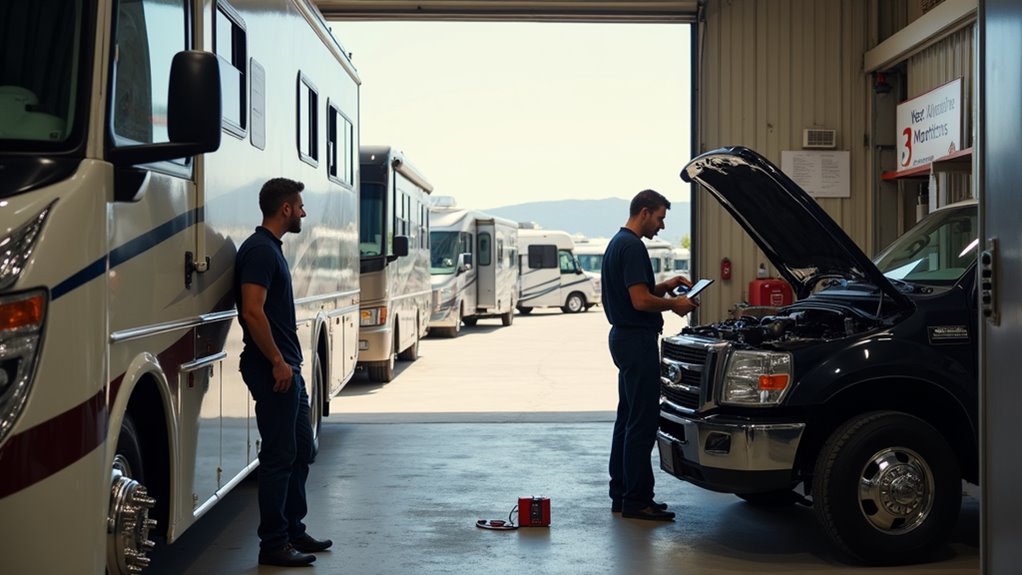
When your RV needs repairs, you’ll quickly discover a harsh reality: finding qualified technicians can be like searching for a needle in a haystack.
The scarcity of skilled RV technicians often leads to longer wait times and considerably higher labor costs, especially during peak travel seasons when rates can spike by 25%.
Modern RVs’ complex electrical and plumbing systems require specialized knowledge and expensive diagnostic equipment.
You’ll face the challenge of sourcing custom-made parts, which are typically pricier than standard automotive components.
With newly implemented tariffs up to 60% on imported parts, repair costs are becoming even more burdensome for RV owners.
Supply chain disruptions can further complicate repairs and drive up costs.
What’s worse, unexpected maintenance issues can blindside you with an additional 5-10% on top of regular repair expenses.
The combination of technician shortage, specialized training requirements, and sophisticated repair needs makes RV maintenance a costly, time-consuming endeavor.
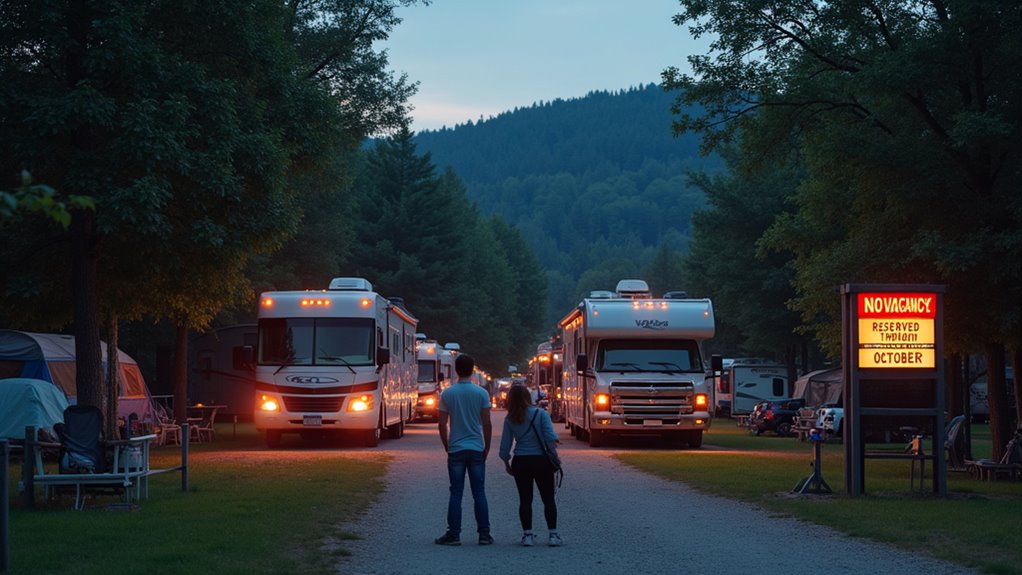
Despite the allure of spontaneous RV adventures, you’ll quickly discover that securing campground reservations has become a frustrating obstacle course. Over half of RVers now report difficulty finding available sites, with popular destinations requiring bookings months in advance. In fact, a staggering 56.1% of campers struggled to find available campsites in 2024. Even in regions like North Platte Nebraska, where numerous camping options exist, securing spots during peak seasons remains challenging.
You’ll face strict cancellation policies, varied booking windows, and complex permit requirements that’ll make spontaneous travel nearly impossible.
The days of carefree RV travel are largely gone, replaced by a competitive scramble for limited camping spots.
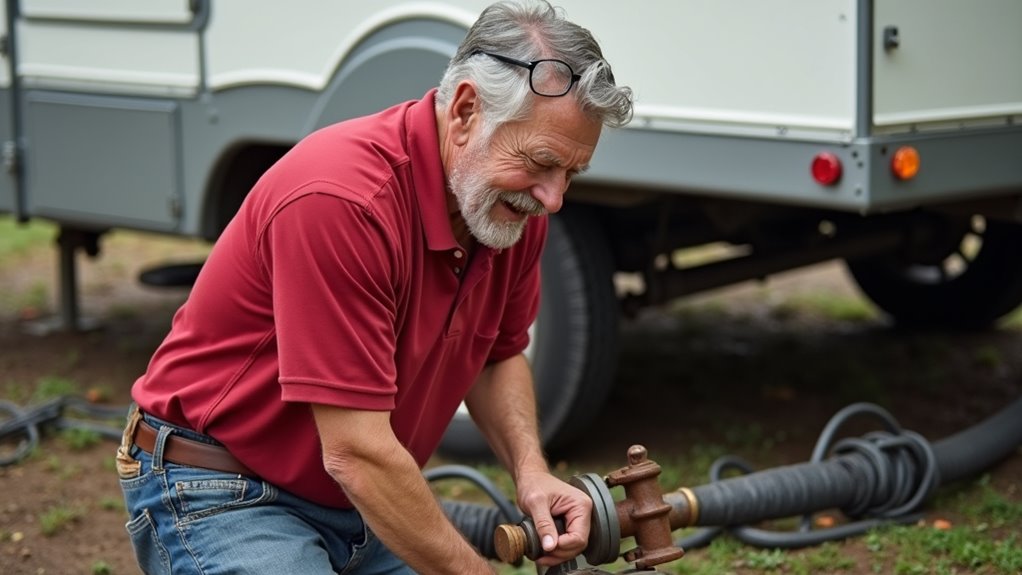
The physical toll of RV ownership catches many buyers off guard.
You’ll need significant strength and stamina to handle heavy equipment like jacks, stabilizers, and slide-outs that can weigh over 50 pounds.
Setup involves constant bending, lifting, and crawling under your rig to manage hookups and connections.
You’re looking at 30-60 minutes of demanding physical labor each time you arrive or leave a campsite.
The work includes maneuvering on uneven terrain, operating mechanical systems, and troubleshooting technical issues – often in awkward positions.
According to profitability analysis data, the physical demands often lead to increased operational costs when owners must hire help for setup and maintenance tasks.
If you have any mobility issues, arthritis, or chronic back problems, these tasks become even more challenging.
Long hours of driving large motorhomes or towing RVs will also test your endurance, while the risk of injury from improper lifting or mechanical failures remains constant.
Even with travel trailers being a popular choice for RV enthusiasts, the physical demands of setup and maintenance remain significant drawbacks.
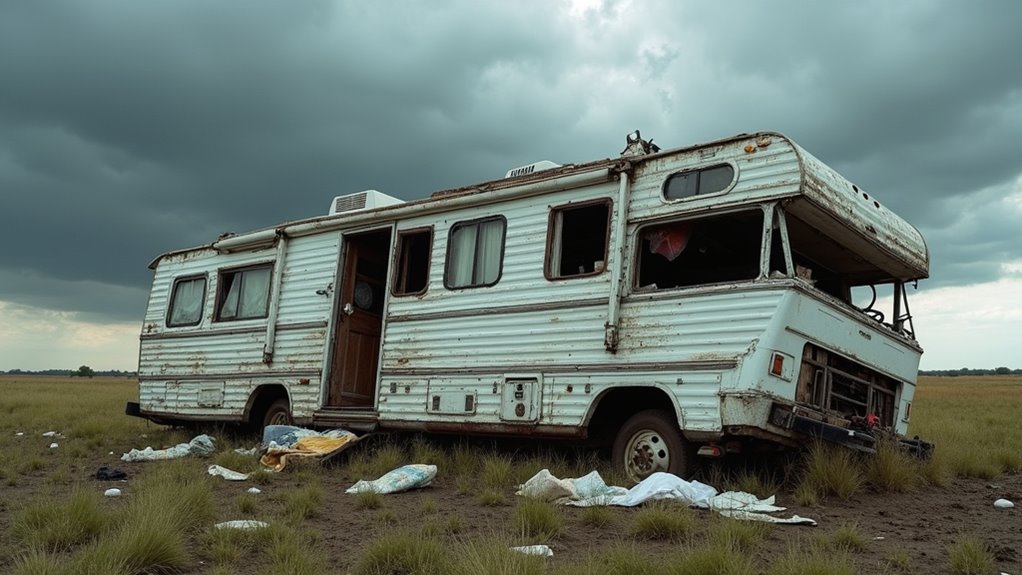
Owning an RV exposes you to significant weather-related risks that can quickly turn your investment into a costly liability.
With annual hail damage alone causing $1 billion in losses and weather-related accidents resulting in thousands of fatalities, you’re facing serious risks every time you hit the road. Climate change is intensifying these risks by increasing the frequency and severity of extreme weather events.
Your RV’s structural vulnerability makes it particularly susceptible to severe weather damage, which isn’t always fully covered by insurance.
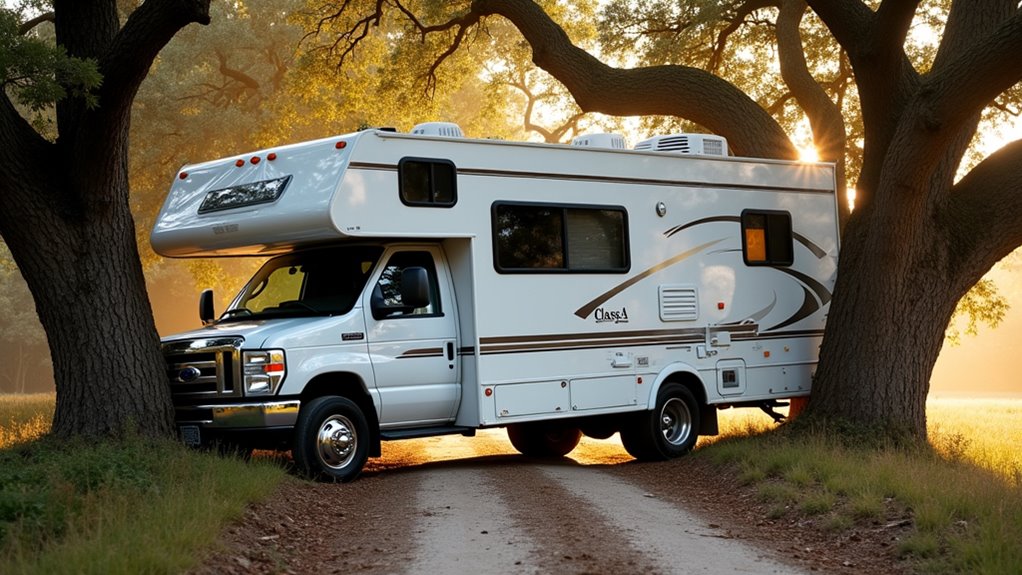
Maneuvering an RV through tight spaces can quickly turn from challenging to nightmarish, especially if you’re new to driving these oversized vehicles.
You’ll need considerably more room to turn than a regular car, and backing into cramped campsites often requires experience you don’t yet have.
Standard GPS systems won’t help much either – they’re not designed for RV navigation and can lead you down dangerous routes with low clearances or weight restrictions.
You’ll constantly battle blind spots and limited visibility while maneuvering around trees, branches, and urban obstacles like curbs and parked cars.
The stress of maintaining constant vigilance in tight spaces will wear you down, increasing your risk of accidents and potentially damaging your RV.
Many campgrounds and urban areas simply aren’t designed to accommodate large recreational vehicles comfortably. Without proper traffic management, you’ll likely encounter congestion and confusion when entering or exiting popular RV parks.
Depending on the size and weight of your RV, you may need to obtain a special license classification before legally operating the vehicle on public roads.
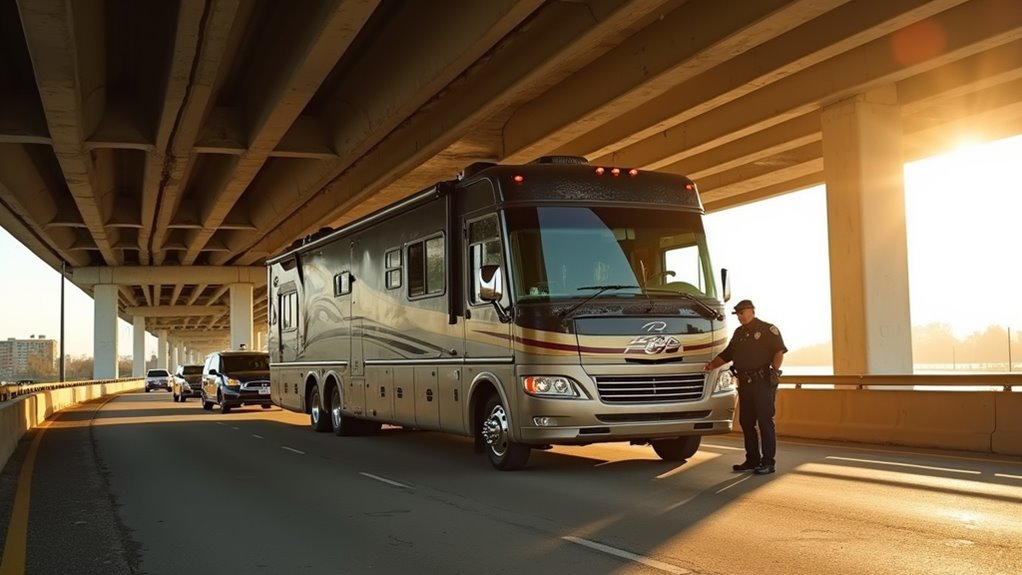
While mastering tight spaces presents its own set of challenges, limitations on travel flexibility can prove equally frustrating for RV owners.
You’ll quickly discover that the freedom of the open road comes with unexpected constraints. Most trips end up being within a seven-hour radius of your home, and you’ll need to carefully plan your stays since popular campgrounds often require advance bookings, especially during peak seasons. Despite 92% of RV owners planning summer trips, the reality of restricted travel options can be disappointing.
The reality is that RV travel isn’t as spontaneous as many imagine, requiring careful scheduling and accepting limitations on where and when you can travel. Traveling with young children requires even more extensive planning, from childproofing the RV to maintaining regular nap schedules in unfamiliar environments.
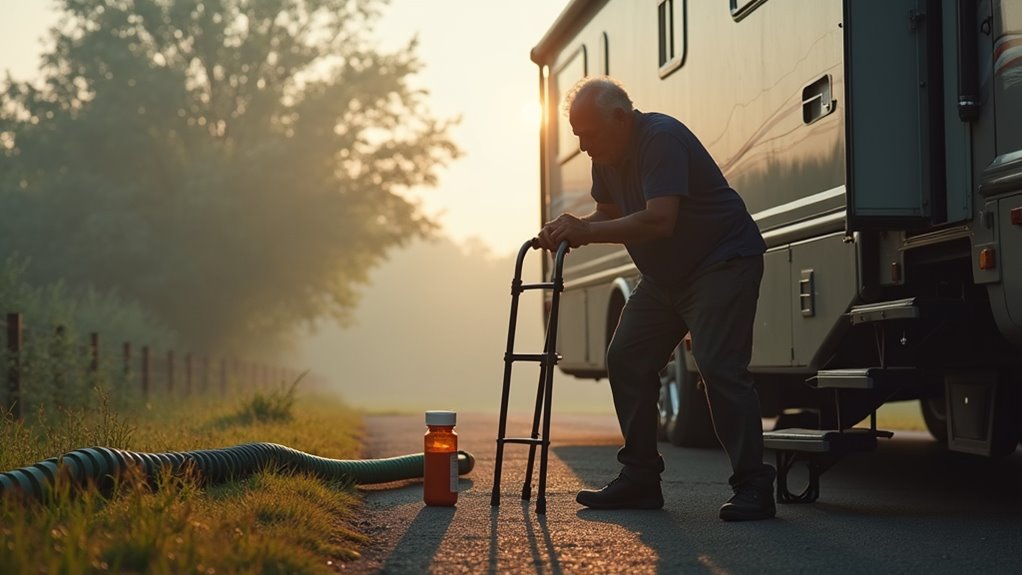
As RV owners age, the lifestyle presents unique health challenges that often get overlooked during the initial purchase excitement.
You’ll face increasingly complex healthcare access issues, especially with Medicare Advantage plans that have limited geographic coverage. Managing chronic conditions becomes harder when you’re constantly changing environments and dealing with potential RV-related health hazards like mold or carbon monoxide. Remember that you’ll need to research vacation override prescriptions to ensure consistent medication access while on the road.
The physical demands of RV maintenance can take a toll on your body, and you’ll find it challenging to maintain consistent preventive care while traveling.
Even simple tasks like finding accessible facilities at campgrounds may become problematic if you develop mobility issues. While the RV community offers valuable social support, the constant movement and environmental changes can strain both your physical and mental well-being over time.
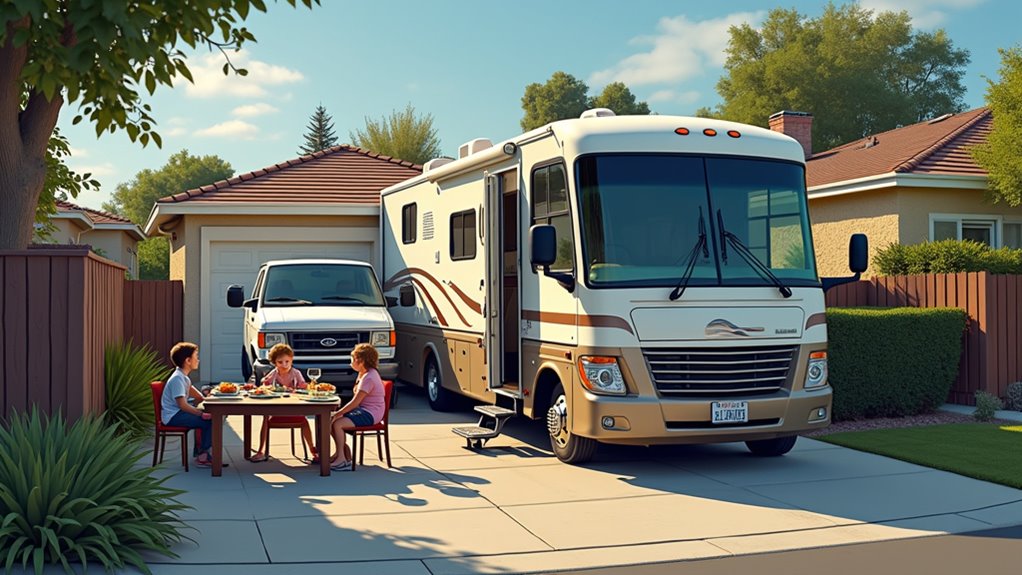
The decision to purchase an RV can profoundly reshape your family’s daily routines and living arrangements.
You’ll need to downsize considerably, potentially giving up cherished belongings and adjusting to a much smaller living space. With 30 days per year being the median usage time for RV owners, your home may sit largely unused while still requiring maintenance and upkeep.
While RV life promises adventure, it often comes with unexpected challenges that can strain family relationships and disrupt established routines.
Before committing to RV life, carefully consider how these profound lifestyle changes will impact your family’s stability, relationships, and daily functioning.
Your RV dreams can quickly turn into financial and logistical nightmares. You’ll face mounting costs, constant maintenance headaches, and storage dilemmas that never end. You’ll struggle with limited travel flexibility, challenging navigation, and inevitable depreciation losses. You’ll discover that the freedom you sought comes with strings attached – from family disruptions to physical demands. Before buying an RV, consider these realities that can’t be ignored.